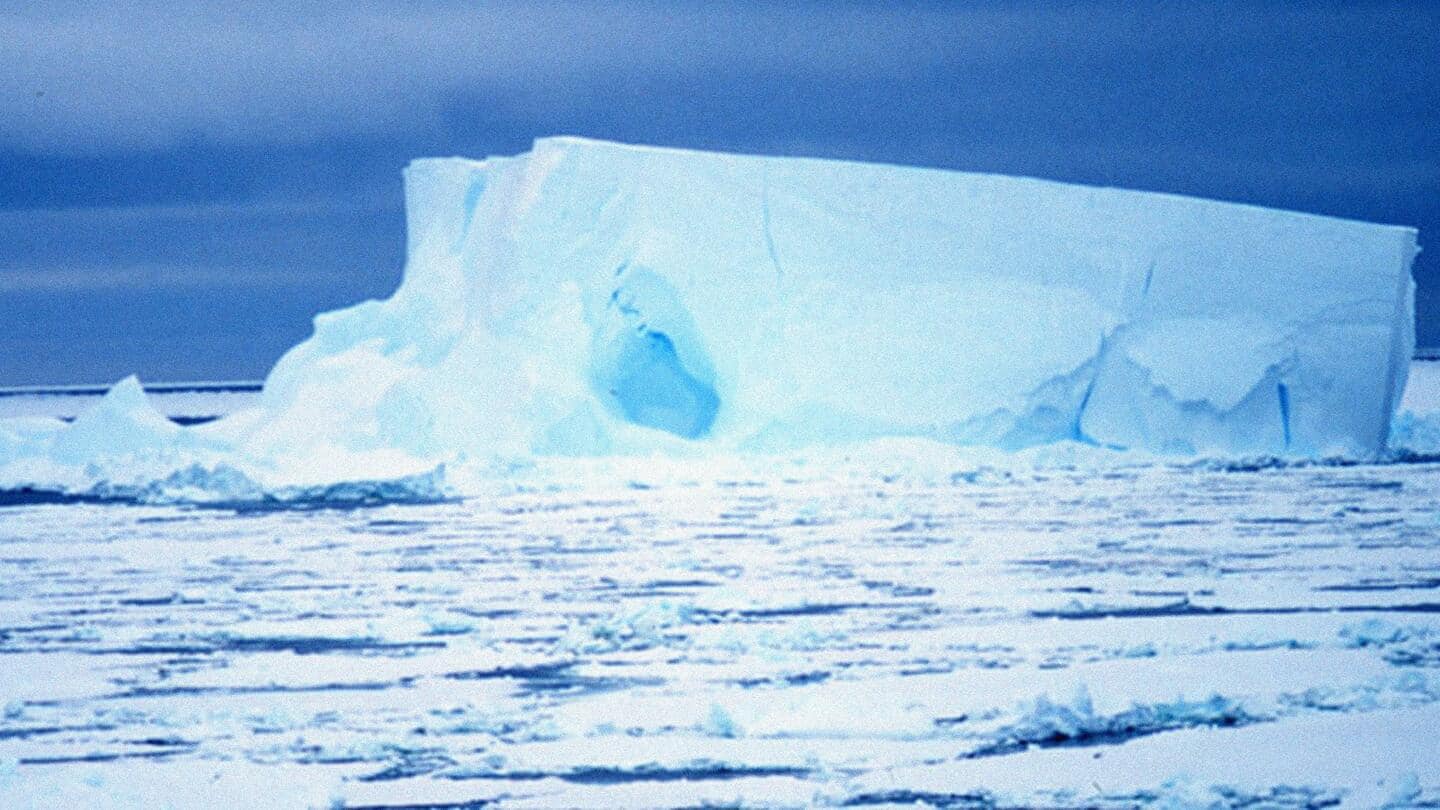
A-76A, the world's largest iceberg, is drifting toward its grave
What's the story
A-76A, which is the world's largest iceberg, has drifted away from its icy home in Antarctica.
An image captured by NASA's Terra satellite shows that the iceberg was floating at the southern end of the Drake passage, a 1,000km-wide waterway, connecting the Atlantic and Pacific Oceans.
Icebergs that slide into this passage are ultimately pushed toward warmer waters, where they dissolve forever.
Context
Why does this story matter?
The current largest iceberg in the world is heading toward its doom. Presently, it is at a vulnerable location, and is predicted that its trajectory will eventually push it into warmer waters where the berg will completely melt.
As of now, it is uncertain how long A-76A will pitch a tent in the turbulent Drake Passage before it meets its fateful end.
Twitter Post
Take a look at where A-76A is sitting
See how the shape and texture of A-76A differs from sea ice in the lower right corner?
— NASA Earth (@NASAEarth) November 4, 2022
That’s because icebergs aren't sea ice! Icebergs are the floating fragments of glaciers or ice shelves, whereas sea ice is frozen seawater that floats on the ocean surface. pic.twitter.com/E5KQCUyDsT
Position
A-76A's area is twice that of London
The U.S. National Ice Center (USNIC) reported in June 2021 that A-76A measured 135 kilometers long and 26 kilometers wide, an area twice the size of London.
The iceberg has maintained the same dimensions, according to a survey done last month.
A-76A has ventured around 2,000km and has now landed in the Drake Passage, between Elephant Island and South Orkney Islands in Antarctic Peninsula.
Details
A-76A is the biggest fragment of the previous largest iceberg
A-76A is the largest fragment of the three icy pieces that resulted from the shattering of its parent iceberg, the A-76, in 2021.
The A-76 itself was a portion of Antarctica's Ronne Ice Shelf which broke away in May 2021. Around this time it was considered the largest iceberg but as we know it eventually chipped into three individual fragments: A-76A, A-76B, and A-76C.
Facts
The Drake Passage measures 11,000 feet in depth
According to Britannica, the Drake Passage marks a zone of climatic transition separating the humid and subpolar conditions of the tip of South America, and the frigid, polar regions of Antarctica.
The average depth of this waterway is an astonishing 11,000 feet (3,353 meters) and gives rise to the world's longest and strongest ocean current called Antarctic Circumpolar Current (ACC).
Ocean current
ACC is the only ocean current that circulates globally
ACC is the only current that circulates around the globe. It travels in a clockwise direction from west to east and has an estimated flow rate of 3,400 to 5,300 million cubic feet per second.
The powerful ocean current shoves any wandering iceberg toward the eastward. Ultimately, the icy slab is tossed northward, toward the equator, into warmer waters where it melts.